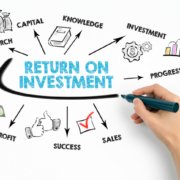Senior Living Leads: The Real ROI of Internet Leads
Internet leads represent 50% of all new lead generation in the senior living industry. There are many flavors, including organic lead generation from your own website, subscription (monthly flat fee) models, pay-per-lead, and pay-per-move-in options. If you need to increase lead generation, which model should you choose and how do you measure the ROI?
Here are the results from a six-month evaluation of every internet lead model, the financial results, the occupancy impact, and lessons learned about internet lead management.
Senior Living Leads: Evaluation Structure
We formed two groups of communities representing every possible combination of IL, AL, ALZ & CCRCs. One group received senior living leads from every internet lead model and managed the leads on their own. Another group received leads from the identical sources. A call center managed their leads for 30 days. Our goals were to measure the cost per lead, the cost per qualified lead, the cost per tour, and ultimately the cost per move-in. We also wanted to measure the impact of allocating dedicated resources to responding to internet leads on conversions, revenue, and occupancy. The two groups had almost identical occupancy (an average of 83.75%).
Senior Living Leads: Lessons Learned
If we skip to the end of the story, the call center results were significantly better than the community results – even though the call center staff had no experience in senior living. What they did have was a mindset to . . .
- Respond immediately to every lead
- Believe that every lead was viable (no pre-conceived beliefs that internet leads were low quality)
- Ask every question on the Discovery form
- Follow a 30-day lead nurturing process to look for opportunities if the prospect was not ready to tour on the first interaction
Here are some lessons learned from the call center results:
- Day-one immediate response is critical for internet leads.
- Having dedicated resources available 7 days a week led to improved opportunity.
- 56% of “connects” (voice-to-voice contact for Discovery) happened on Day 1 (Day 2 dropped to 10%).
- 53% of tours scheduled occurred on Day 1 (8.6% Day 2).
- Quick response allowed the call center to connect with more urgent leads (28% looking within 30 days).
- Following a consistent process for follow up with call outs & email nurturing for 30 days creates opportunity.
- Although 75% of tours were scheduled in the first 7 days, 131 tours were booked Days 8- 30.
Senior Living Leads: Show Me The Money!
The communities who had the call center support grew their occupancy by 52 units in the six-month pilot. The communities that managed their own leads lost 28 Units of ADU. This translated into over $3.5 million dollars in estimated revenue for the call center cohort based on an 18-month length of stay – even after paying the call center expenses.
Which Internet Lead Model Produced the Best Results?
The best results are always generated from organic senior living leads. Prospects who visit your website are not only interested in senior living, they are also interested in your community. The lowest cost to lead, tour and move-in and the highest conversions are from organic leads. This is why investing in SEO and live chat on your website is a great investment.
Pay-per-move-in models performed significantly better than either subscription or pay-per-lead. A Place For Mom produced the very best conversion rates across the board. The cost per move-in ranged from a low of about $3700 to a high of over $11,000 so it is important to choose wisely!
Need help getting the most out of your community’s senior living leads? Let’s Chat!







 Ever since we entered this world we have been labeled. Newborn. Cute. Colicy. Chubby. Then as we grew our labels grew along with us. Fast, small, smart, tall. Rich, poor, weird or a bore. And we labeled others because there is a natural tendency to put people that we meet in categories. The further we travelled in life the more the labels – mother, sister, wife, doctor, nurse, shy, lazy, etc. These labels become stereotypes – and these become judgements and biases.
Ever since we entered this world we have been labeled. Newborn. Cute. Colicy. Chubby. Then as we grew our labels grew along with us. Fast, small, smart, tall. Rich, poor, weird or a bore. And we labeled others because there is a natural tendency to put people that we meet in categories. The further we travelled in life the more the labels – mother, sister, wife, doctor, nurse, shy, lazy, etc. These labels become stereotypes – and these become judgements and biases.